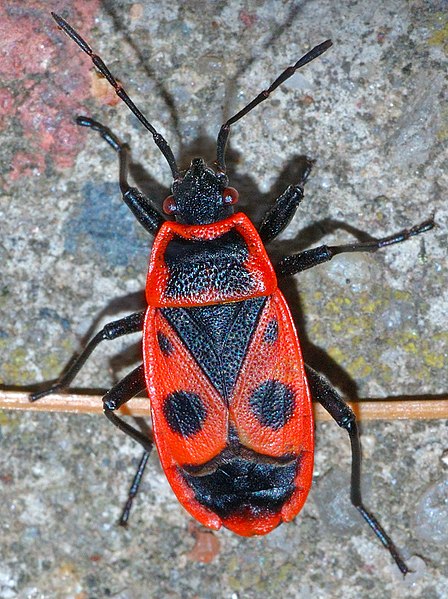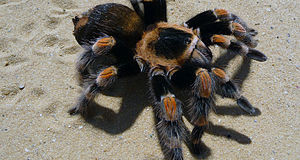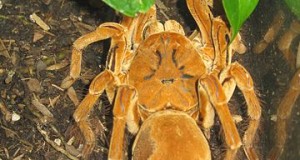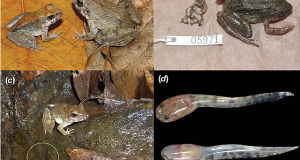 Most invertebrate keepers have noticed that individuals of the same species often behave quite differently under the same circumstances. For example, one Giant Bird-Eating Spider might feed in broad daylight and be content to remain in the open, while another refuses to eat unless provided with a deep burrow and complete darkness – I can recall countless similar observations. Does this mean that these “simple” creatures have personalities? According to a recent study, the answer may be “yes”…
Most invertebrate keepers have noticed that individuals of the same species often behave quite differently under the same circumstances. For example, one Giant Bird-Eating Spider might feed in broad daylight and be content to remain in the open, while another refuses to eat unless provided with a deep burrow and complete darkness – I can recall countless similar observations. Does this mean that these “simple” creatures have personalities? According to a recent study, the answer may be “yes”…
How Does One Test Insect Personalities?
An article published in the September, 2010 issue of The Proceedings of the Royal Society (B), reveals that individual insects exhibit distinct personality traits, and that these traits remain consistent in different situations.
Working with Field Crickets and Short and Long-Winged Firebugs collected in Hungary, the researchers presented the insects with opportunities to hide, explore and confront others. They recorded variables such as how long it took an individual to leave a shelter, how much time it spent exploring novel objects and how it reacted to others of its kind. Each insect was tested several times in each situation, to assure that the behavior it exhibited was typical.
Shy, Bold and Aggressive Insects
Individual insects varied from one another in their reactions, and the traits they exhibited were consistent over a wide range of situations. For example, if a certain individual explored new objects immediately and for a long time, it also exhibited similarly bold behavior when offered a shelter or when placed with other insects. A bold Field Cricket (indicated by quick abandonment of its shelter) was also aggressive towards other crickets, less concerned about predators, and very active. Similarly, shy individuals remained secretive or passive in all situations.
 This study seems to support what invertebrate fans have long-believed, and shows that we must observe our animals carefully, and adjust their habitats accordingly…what works for one Emperor Scorpion or Praying Mantis may spell doom for another.
This study seems to support what invertebrate fans have long-believed, and shows that we must observe our animals carefully, and adjust their habitats accordingly…what works for one Emperor Scorpion or Praying Mantis may spell doom for another.
Please Note: Despite these most interesting findings, I caution you against putting any faith in the “tameness” or “good nature” of your invertebrate or reptile pets. They do not in any sense become trustworthy in the manner of dogs, and must always be handled with care…I have seen many people severely injured by “tame” spiders, snakes (the term “dog tame” as applied to snakes is very misleading) and lizards, often without warning and after years of calm behavior.
Further Reading
More amazing insect news – female crickets somehow “teach” their unborn young how to avoid spiders; details here.
Firebug referenced from wikipedia and originally posted by Aka
 That Reptile Blog – Reptile, Amphibian and Exotic Pet Care and Information
That Reptile Blog – Reptile, Amphibian and Exotic Pet Care and Information




How interesting-though I think it is a stretch to call it personality. I bet we can assume that the relative boldness/shyness of a cricket thus has a neurophysiological and perhaps then genetic basis-perhaps one could select for bold/shy crickets?(presumably-bold crickets might grow faster and make better feeders?) I keep dubia roaches and have observed that different animals would come out at different times after food was placed in the tank. I assumed it mostly had to do with how hungry they are.
~Joseph
Hello Joseph, Frank Indiviglio here.
Nice to hear from you again; there seem to be many variables, and there is much we do no t know, but I wouldn’t be surprised if different habitats/pressures etc. selected for certain behavioral types. One thing is for sure, inverts are more complicated than most imagine – a recent study showed that female crickets that had been exposed to spider attacks and had survived produced young that were more skilled at avoiding spiders than were other youngsters! (the spiders’ fangs were wax-coated, so the female crickets were not killed and, over time, learned how to avoid/escape the spiders).
Good luck, enjoy and please keep me posted.
Best regards, Frank Indiviglio.
Hello Joseph, Frank Indiviglio here.
Great question…you hit upon a mystery that plagued zoos until rather recently. For many years, it was considered risky to house turtles with other herps, especially snakes; otherwise healthy snakes seemed to die at an unusually high rate in mixed exhibits, but we were not able to pinpoint the reason.
We now know that E. invadens and some other micr-organisms that are relatively harmless to turtles can be fatal when contracted by snakes and lizards; The pathogens can be cleared from turtles w/o side effects, but it takes some time as they are resistant to meds in certain phases of their life cycle. Most zoos require that turtles pass 3 negative fecal samples before being cleared for mixed species exhibits, and further tests are run monthly. Rare or especially sensitive lizards and snakes are usually not housed with turtles.
As an aside, a similar problem sometimes when animals of any type are housed with relatives from different ranges. For example, a Leopard Frog from the USA might host micro-organisms that do it little harm, but which could easily infect an Edible Frog from Europe; the European frog’s immune system may not have evolved the ability to battle the organism, and hence it might be overcome.
Good luck and please keep me posted.
Best regards, Frank Indiviglio.